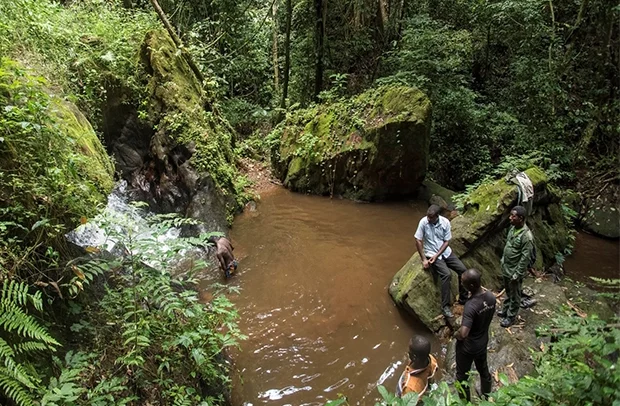A group by name Concerned Youth of Sagyimase has kicked against the invasion of the Atewa Forest by illegal miners.
According to the youth group, representing the chiefs, farmers, traditional leaders, environmental activists, and civil society organisations, they received information two months ago about a “man notorious for destructive illegal mining” searching for lands at Sagyimase.
In a press statement issued by the Kyidomhene of Akyem Sagyimase, Baffour Asare Bediako, the illegal miner approached the chief of Sagyimase with the intention to acquire 800 acres of land solely for illegal mining within the restricted Atewa Forest.
They described the man as someone who is highly connected to the corridors of power and ‘impossible’ to bring to book.
The group indicated that, should the proposed illegal mining activity be allowed to take place, it would be catastrophic to the people of Sagyimase, Akyem Abuakwa and the country as a whole, especially taking into account that he does not have a license from the Minerals Commission to mine in the forest.
“It is of utmost importance to note that Sagyimase is both the ancestral and geographical entrance to the Atewa Forest, and as such any person seeking to enter the forest with heavy machinery must of necessity use the Sagyimase route. He is therefore leaving no stone unturned and moving heaven and high waters to enter and destroy the Atewa Forest, in his selfish bid to enrich himself at the expense of the entire nation,” Baffour Asare Bediako noted in the statement.
The Concerned Youth of Sagyimase is, therefore, calling on the government to immediately prevent the illegal miner from entering the Atewa Forest else they will resist and protect their heritage, which is of importance to the people of Sagyimase.
The Atewa Range Forest Reserve (also known as Atiwa-Atwiredu) was established as a Forest Reserve in 1926 under British colonial rule, it was originally protected due to its rich biodiversity and critical watershed functions.
The forest is a globally recognised biodiversity hotspot, home to endangered species, vital water sources, and a critical carbon sink that mitigates climate change. It serves as the headwaters for three major rivers—the Birim, Ayensu, and Densu—which provide drinking water for over 5 million Ghanaians and support agriculture and livelihoods across multiple regions.
The forest was traditionally revered by the Akyem people as a sacred landscape, providing medicinal plants, clean water, and hunting grounds.
Colonial authorities later recognised its ecological value and designated it a reserve.
After Ghana’s independence in 1957, the forest remained protected, but logging and illegal mining began to encroach on its boundaries.
The Atewa Forest is recognised internationally as a Key Biodiversity Area (KBA), an Important Bird Area (IBA), and one of the world’s most critical ecosystems due to its unique biodiversity and endemic species.
The forest is home to 50 mammal species, 1,000+ butterfly species, and 230 bird species, including the endangered white-naped mangabey and Roloway monkey.
Research shows that the forest hosts species found nowhere else on earth, such as the Afia Birago puddle frog (Conraua sagyimase) and the Atewa dotted border butterfly (Mylothris atewa).
Over 1,100 plant species thrive in the forest, including medicinal plants used in traditional medicine.
A Daily Guide Report


